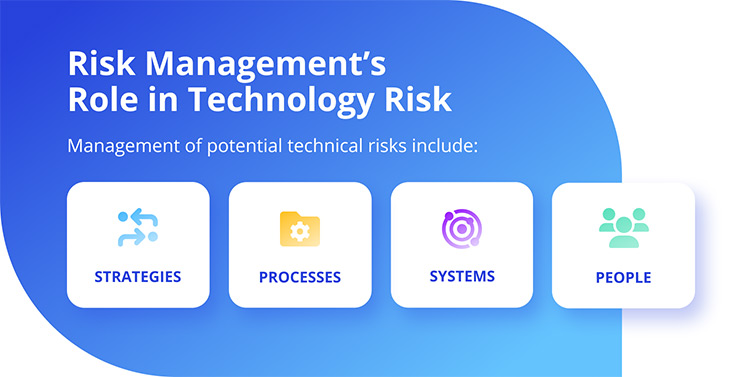
In the rapidly evolving landscape of banking, emerging technologies are driving innovation and transforming the industry. However, with these advancements come new risks and challenges that financial institutions must navigate. This comprehensive article delves deep into the concept of emerging technology risk in banking, exploring the potential threats and opportunities that accompany the adoption of cutting-edge technologies.
The Technological Revolution in Banking
The banking industry is in the midst of a technological revolution, with emerging technologies reshaping the way financial institutions operate. From artificial intelligence to blockchain and quantum computing, the possibilities seem endless. These technologies hold the promise of revolutionizing customer experiences, streamlining operations, and opening up new revenue streams for banks.
The Proliferation of Emerging Technologies
Never before have so many emerging technologies simultaneously impacted the banking sector. The advent of cloud computing, big data analytics, and the Internet of Things (IoT) has created a technological landscape that is both exciting and challenging.
The Promise of Innovation and Efficiency
Emerging technologies offer banks the opportunity to innovate and improve efficiency across various operations. From automating customer service through chatbots to optimizing risk assessment using machine learning algorithms, the potential benefits are immense. However, along with these benefits, banks must be acutely aware of the risks that come with adopting these technologies.
Understanding Emerging Technology Risk
Before diving into the specific risks, it’s essential to define the scope of emerging technology risk and understand why it matters in banking.
Definition and Scope of Emerging Technology Risk
Emerging technology risk refers to the potential negative consequences and vulnerabilities associated with the adoption and use of new and cutting-edge technologies. These risks encompass a wide range of challenges, including cybersecurity threats, operational disruptions, regulatory compliance issues, and even reputational damage.
Why It Matters in Banking
Emerging technology risk is of paramount importance in banking due to several reasons. First, banks are entrusted with safeguarding sensitive financial information and assets. Any breach or compromise of security can have severe consequences for both the institution and its customers. Second, banking is highly regulated, and the introduction of new technologies often raises complex compliance issues. Third, competition in the banking industry is fierce, and staying at the forefront of technological innovation is crucial for remaining competitive.
The Drivers of Emerging Technology Adoption
To understand the risks associated with emerging technologies in banking, it’s essential to recognize the driving forces behind their adoption.
Customer Expectations and Demands
Customers increasingly expect seamless digital experiences, from mobile banking apps to online loan applications. To meet these demands and retain customers, banks are compelled to invest in emerging technologies that enhance convenience and accessibility.
Regulatory Initiatives
Regulators recognize the transformative potential of emerging technologies but also acknowledge the associated risks. They have initiated efforts to promote innovation while ensuring the stability and security of the financial system. Regulatory sandboxes and guidance are examples of how regulators are encouraging responsible adoption.
Competitive Pressure
Banks face intense competition, not only from traditional financial institutions but also from fintech startups and tech giants. To remain competitive, banks must continuously innovate and adopt technologies that give them a competitive edge in the market.
The Risks of Rapid Technological Change
While emerging technologies offer immense promise, they also bring about a new set of risks that banks must address.
Cybersecurity Threats and Data Breaches
As banks embrace digital transformation, they become more vulnerable to cyberattacks. Hackers and cybercriminals are continually evolving their tactics, targeting financial institutions to steal valuable data, conduct fraud, or disrupt operations. Cybersecurity breaches can result in financial losses, damage to reputation, and regulatory penalties.
Operational Challenges and System Failures
Rapid adoption of emerging technologies can lead to operational challenges, including system failures, downtime, and glitches. These issues can disrupt banking operations, hinder customer service, and erode trust.
Compliance and Regulatory Risks
The introduction of new technologies often outpaces regulatory frameworks. Banks must navigate compliance challenges, ensuring that they adhere to existing regulations while also meeting emerging technology requirements. Non-compliance can result in significant legal and financial consequences.
Managing Emerging Technology Risk
Effectively managing emerging technology risk requires a proactive approach and a comprehensive risk management strategy.
Risk Assessment and Mitigation Strategies
Banks must conduct thorough risk assessments to identify potential vulnerabilities associated with emerging technologies. Once identified, mitigation strategies should be developed and implemented. These strategies may include enhanced cybersecurity measures, contingency plans for system failures, and compliance audits.
The Role of Cybersecurity Measures
Robust cybersecurity measures are critical in mitigating the risks associated with emerging technologies. This includes investing in advanced threat detection systems, implementing multi-factor authentication, and continuously monitoring for potential threats. Regular employee training and awareness programs also play a vital role in cybersecurity.
Regulatory Compliance in a Tech-Driven Landscape
Banks must actively engage with regulators and stay informed about evolving regulations related to emerging technologies. Compliance programs should be adaptable and capable of addressing regulatory changes. Collaboration with regulators and participation in regulatory sandboxes can facilitate responsible innovation while maintaining compliance.
Fostering a Culture of Innovation and Risk Management
Balancing innovation with risk management is a delicate task that requires a cultural shift within banks.
Balancing Innovation and Security
Banks should foster a culture that encourages innovation while prioritizing security and risk management. This involves creating cross-functional teams that include both technologists and risk management experts to evaluate the risks and benefits of new technologies.
The Importance of Employee Training and Awareness
Employees play a crucial role in risk management. Training programs should educate staff about emerging technology risks, cybersecurity best practices, and the importance of vigilance. Employees should be empowered to recognize and report potential threats.
Collaboration with Technology Partners
Banks can benefit from collaborating with technology partners who specialize in emerging technologies. These partners can provide expertise, guidance, and solutions to help banks navigate the risks associated with specific technologies.
Future Trends in Emerging Technology Risk
The landscape of emerging technology risk will continue to evolve as new technologies emerge and gain prominence.
Artificial Intelligence and Machine Learning
AI and machine learning will play an increasingly significant role in banking. These technologies offer immense potential for improving customer service, risk assessment, and fraud detection. However, they also introduce risks related to algorithm bias and data privacy.
Blockchain and Cryptocurrency
Blockchain technology, beyond cryptocurrency applications, holds the promise of secure and transparent record-keeping. However, it also poses risks related to scalability, regulatory compliance, and the potential for vulnerabilities in blockchain networks.
Quantum Computing and Cybersecurity Challenges
Quantum computing represents a potential breakthrough in computation power. However, it also presents unprecedented challenges to encryption and cybersecurity. Banks will need to stay ahead of the curve in developing quantum-resistant encryption methods.
Conclusion
In conclusion, emerging technology risk in banking is a complex and evolving landscape. While emerging technologies offer immense opportunities for innovation and efficiency, they also introduce new risks that require careful management.
Banks that strike a balance between embracing technological advancements and implementing robust risk management strategies will be best positioned to thrive in the dynamic world of banking. As technology continues to advance, financial institutions must remain vigilant, adapt to changing circumstances, and prioritize the security and trust of their customer


